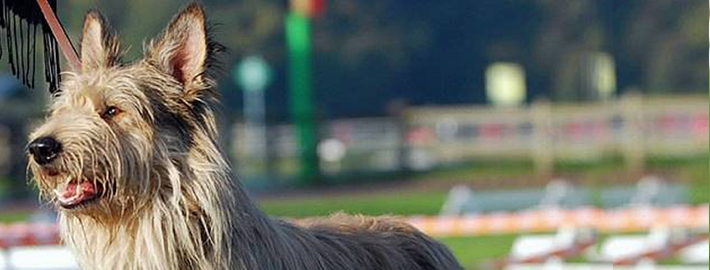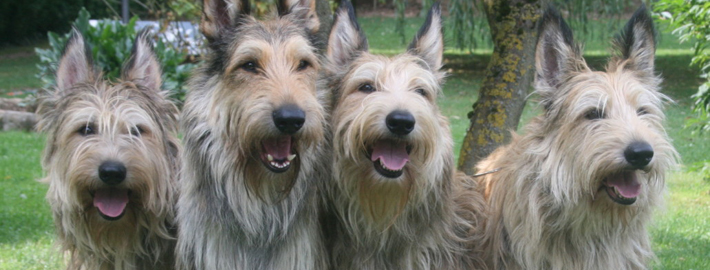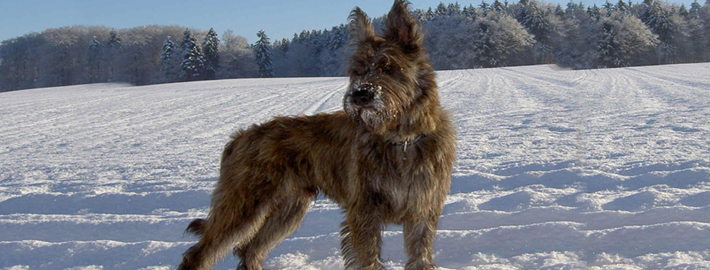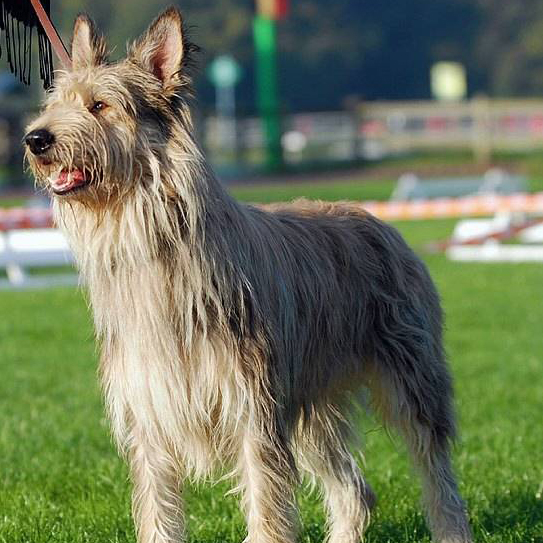What makes the Berger Picard Unique?
This medium-size dog with the prick ears and thick eyebrows has a lively, intelligent personality. They endear themselves with their humanlike gaze and goofy grins and stand out as resilient playmates for kids. Thanks to their intelligence, they respond well to training, although they can occasionally be stubborn. They’re sensitive to your tone of voice, so even if you get impatient, try to give commands cheerfully — it generally works best.
Breed Groups
Page Contents
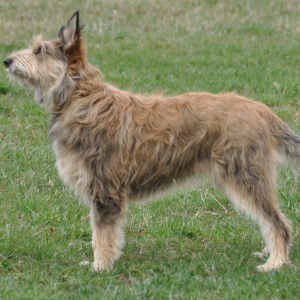
Is the Berger Picard Right For You?
The Berger Picard, with its stamina and drive, needs daily exercise and mental stimulation. Despite having a stubborn streak, the Picard responds well to positive training and is a good-natured and loyal companion. Their observant nature makes them great watchdogs, and with proper socialization and training they can also become quiet, even-tempered house dogs.
In 5 Words
- Mellow
- Lively
- Energetic
- Stubborn
- Intelligent
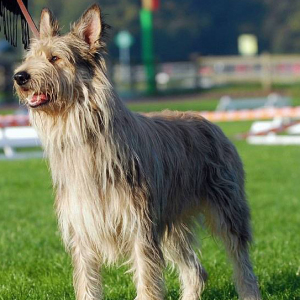
Characteristics
Learn About the Berger Picard
Description
The Berger Picard is a medium-sized, well-muscled dog, slightly longer than tall. The natural tail normally reaches to the hock and is carried with a slight J-curve at the tip. The coat is harsh and crisp to the touch, and about 2-2.5 inches (5-6 cm.) long all over the body. The thick strong hair is not fluffy and light, therefore it does not fly around in the air. Coat colors include grey, grey-black, blue-grey, red-grey, and light or darker fawn. A small white patch on the feet is permissible in the show ring but not favored. The ears are erect, high-set and quite wide at the base. The eyebrows are thick, but do not shield the eyes.
Short History of the Berger Picard
Thought to be the oldest of the French Sheepdogs, the Berger Picard was brought to northern France and the Pas de Calais, in the 9th century by the Franks.
Some experts insist that this breed is related to the more well-known Briard and Beauceron, while others believe it shares a common origin with Dutch and Belgian Shepherds. Although the Berger Picard made an appearance at the first French dog show in 1863, the breed’s rustic appearance did not lead to popularity as a show dog.
The breeding stock of the Berger Picard, was decimated by the ravages of World War I and World War II. With its population concentrated on the farms of north-eastern France, trench warfare in the Somme reduced the breed to near extinction.
The Picard’s easy care and mellow, yet mischievous, temperament have started the breed back on the road to recovery. Nevertheless its numbers are still limited, even in its native country. As mentioned previously, today in France there are approximately 3500 dogs and in Germany approximately 500 of this breed. At present there are approximately 300 Berger Picards in the United States and Canada.
The Berger Picard was recognized by the United Kennel Club on January 1, 1994. In 2006, the Berger Picard Club of America was formed to protect and promote the breed in the United States. The Berger Picard has been recorded in the Foundation Stock Service of the American Kennel Club since April 2007. On October 12, 2011, The American Kennel Club chose the Berger Picard Club of America as the official parent club, as the breed moves towards full recognition.At the February 2012 Meeting of the American Kennel Club Board of Directors, the Board voted to move the Berger Picard into the Miscellaneous Group effective January 1, 2013.
Temperament
The Berger Picard will learn quickly but needs a trainer who can display a natural authority. The Berger Picard is an energetic and sweet-tempered dog who does well with children and loyal to the family. They are alert and do well as a farm guard.
Caring for Your Berger Picard
General Health
Hip dysplasia is known, but not common because the dog is not super heavy. During the first year puppies sometimes get eye infections due to draught or dirt getting into the eye; after one year those problems usually don’t appear anymore. There are some hereditary eye problems such as the PRA and RD. All breeding dogs, males and females, should get checked for those diseases once a year or every two years. (PRA= Progressive Retina Atrophy, RD=Retina dysplasia).
Grooming & Bathing
Grooming needs are minimal; they need only a monthly combing and brushing and a wipe-down when they get something on their coats. They shed lightly and don’t have a doggie smell.
Exercise & Training
Lots of exercise is required for this breed, including a long daily walk. It will enjoy swimming, running beside your bike, and a nice long walk. The Berger Picard makes an excellent jogging companion. Enrolling it in obedience class or in an agility skills class is an excellent way to keep it happy. They do not do well in competition because they find it almost impossible to perform consistently.

